244 vs. 6mm Remington
Big Game Loads
feature By: Patrick Meitin | December, 24
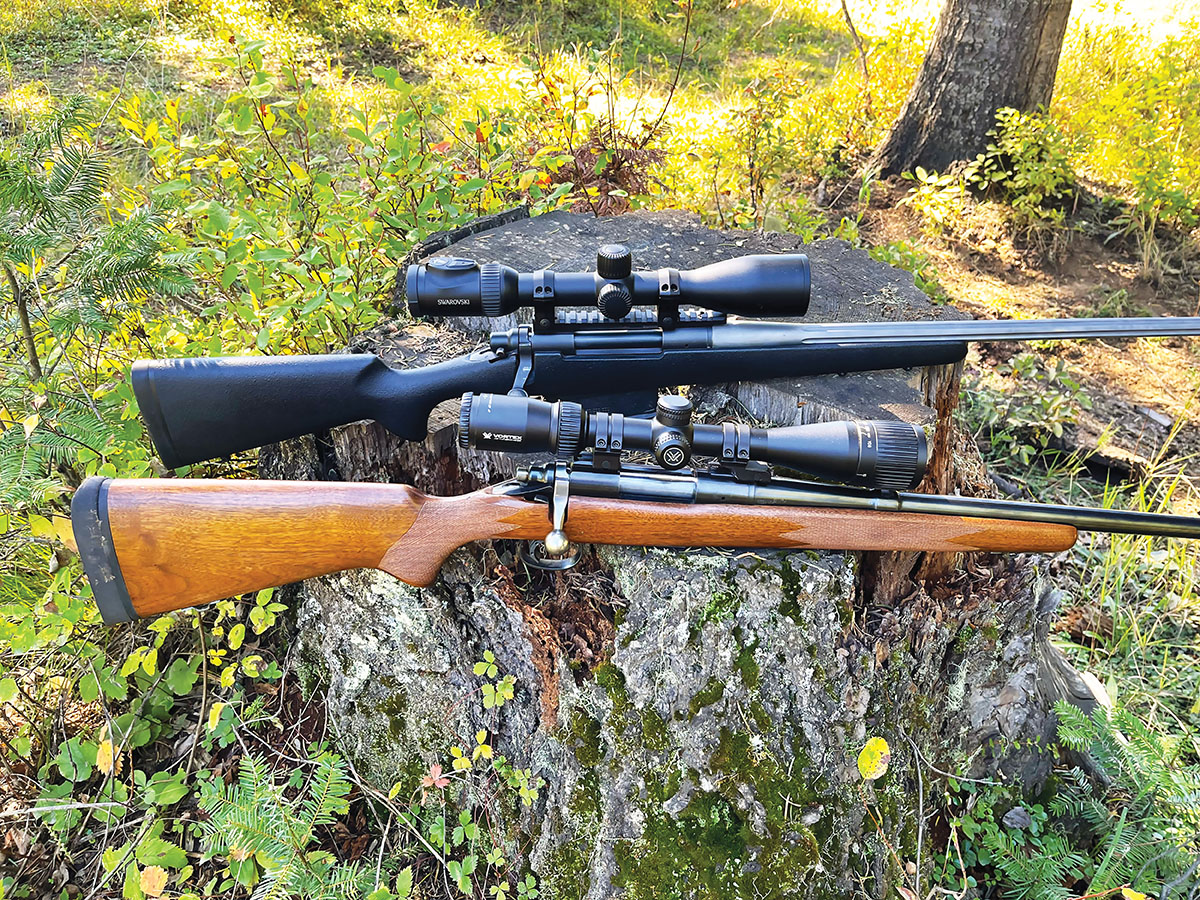
The 244 Remington was released in 1955. The same year as the 243 Winchester. The 244 Remington was created by necking down the 257 Roberts (itself formed from the ancient 7x57mm Mauser). The 244 Remington provided an approximate 10 percent increase in case capacity and a 100-150 feet per second (fps) velocity advantage over the 243 Winchester using same-weight bullets. This should have cemented it as the preeminent .243-caliber/6mm cartridge.
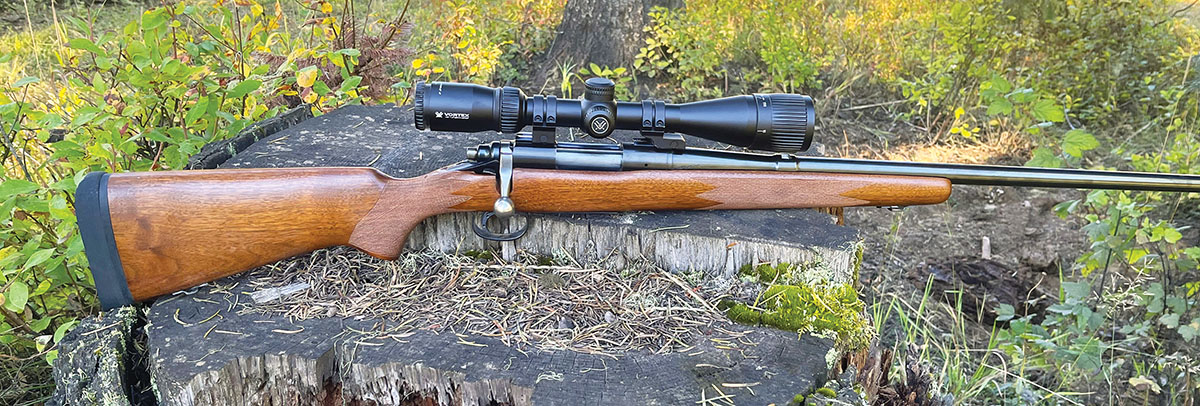

Upon launch, Remington viewed the 244 Remington as the ultimate long-range varmint cartridge, which led to the choice of a 1:12 rifling twist. There is no doubt Remington met their goal, as the 244 Rem loaded with thin-skinned 75- to 86-grain bullets is certainly a serious windy-day-long-range varmint zapper. Remington, however, had misread its customer base. Not foreseeing that hunters would prefer a double-duty cartridge capable of sending light, fast bullets in pursuit of varmints and predators or heavier bullets during annual fall deer hunts, the 243 Winchester was paired with a faster 1:10 rifling twist. This allowed it to stabilize 100- to 105-grain big-game bullets easily. Remington would eventually correct course – which I’ll address shortly – but not before Winchester’s cartridge gained the 6mm dominance it retains to this day.
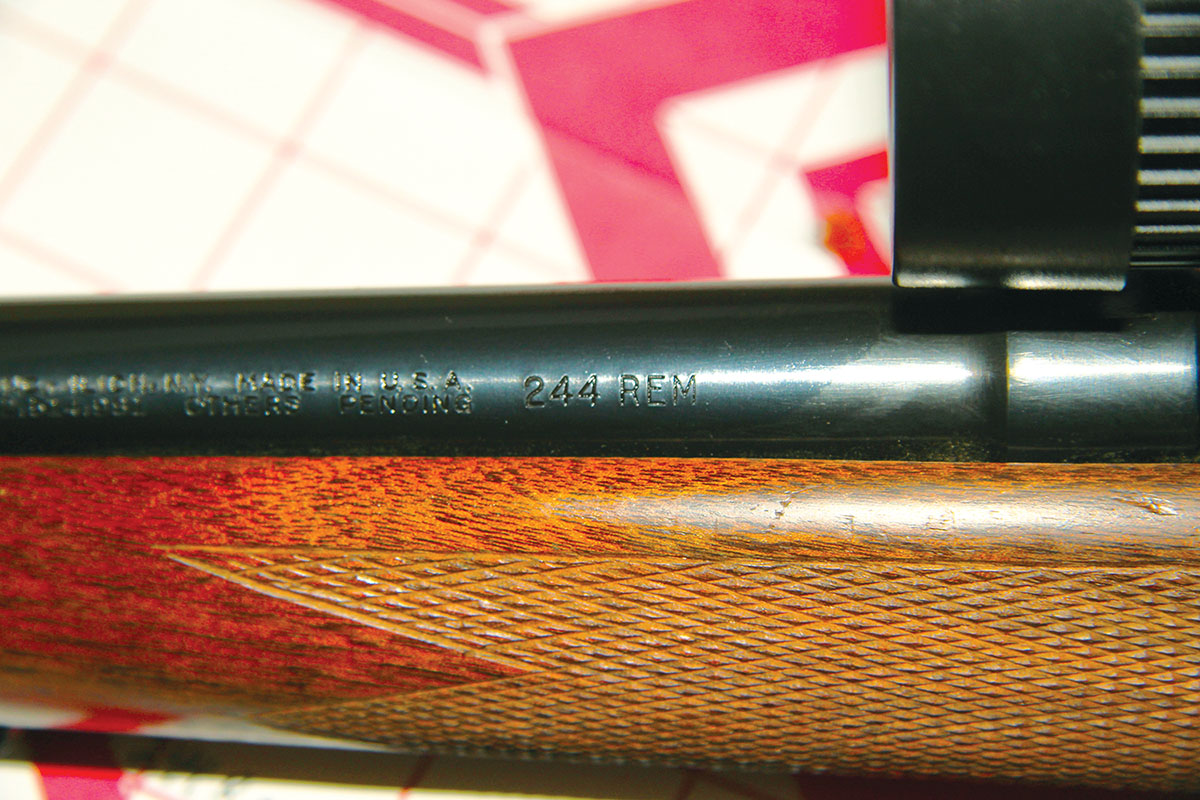
Remington’s 721 and 722 were manufactured from 1948 to 1962. They were offered in 222 Remington, 222 Remington Magnum (3,803 rifles), 243 Winchester (2,186 rifles), 257 Roberts, 300 Savage, 308 Winchester and the 244 Remington under discussion here. The 721 and 722 became one of the first modern, economically-produced sporting rifles and, more importantly, served as the basis for the mega-popular Model 700 released in 1963.
The Remington 721 and 722 replaced the Remington Model 30 and its Model 720 variant, production of which had ceased during WWII. Yet WWII not only taught Remington how to improve manufacturing efficiency while producing massive numbers of firearms, but significant technological advancements had arrived during the war. Remington’s Model 30 and 720 Mauser-action knockoffs had proven to be labor-intensive and expensive to produce, factors which advancements in manufacturing technology failed to remedy.
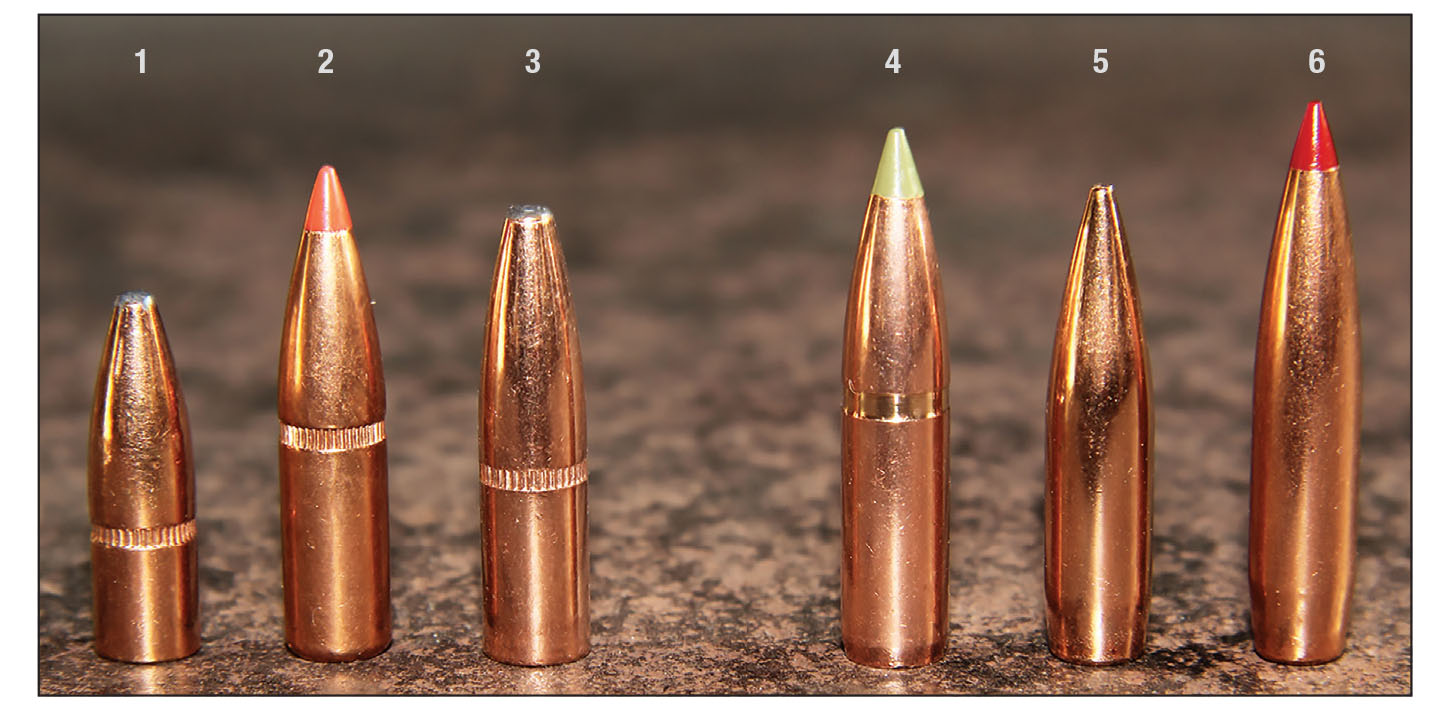
Upon introduction, Remington labeled the 721 and 722 as the strongest bolt actions ever produced. Three features streamlined production time, lowered costs and improved accuracy potential: replacing the billet-machined structure with a lathe-turned round action, a simple recoil lug plate sandwiched between the barrel and receiver, and a multi-piece bolt with an encased bolt head. The large claw extractor was replaced by a small but effective part mounted in the recessed bolt face, a plunger-style ejector replacing the Mauser blade. The new adjustable trigger mechanism allowed a crisper break, and a new, simpler safety mechanism was introduced.
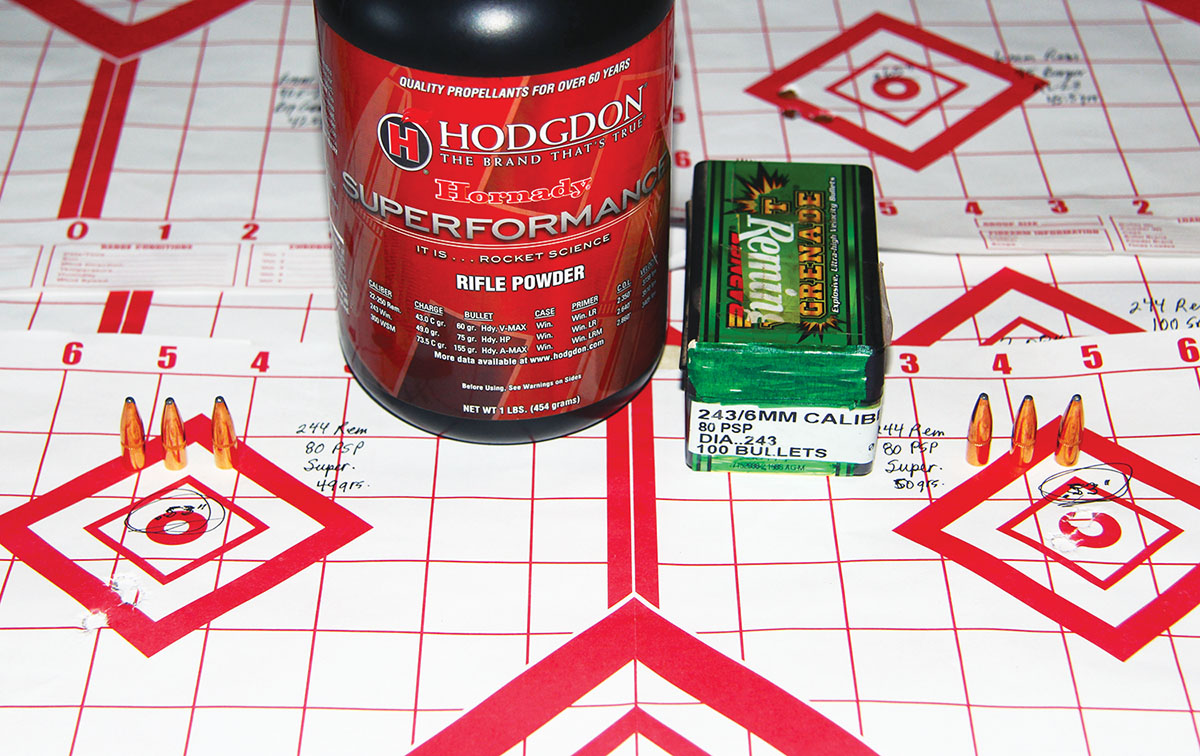
The test rifle was an early Remington Model 722 chambered in 244 Remington, including a 24-inch, medium-contour barrel and 1:12 rifling twist. Custom hand checkering, sling studs and a KICK-EEZ recoil pad were added after leaving the factory. The 722 was topped with an affordable Vortex 4-12x 40mm Crossfire II scope mounted on two-piece Weaver bases.
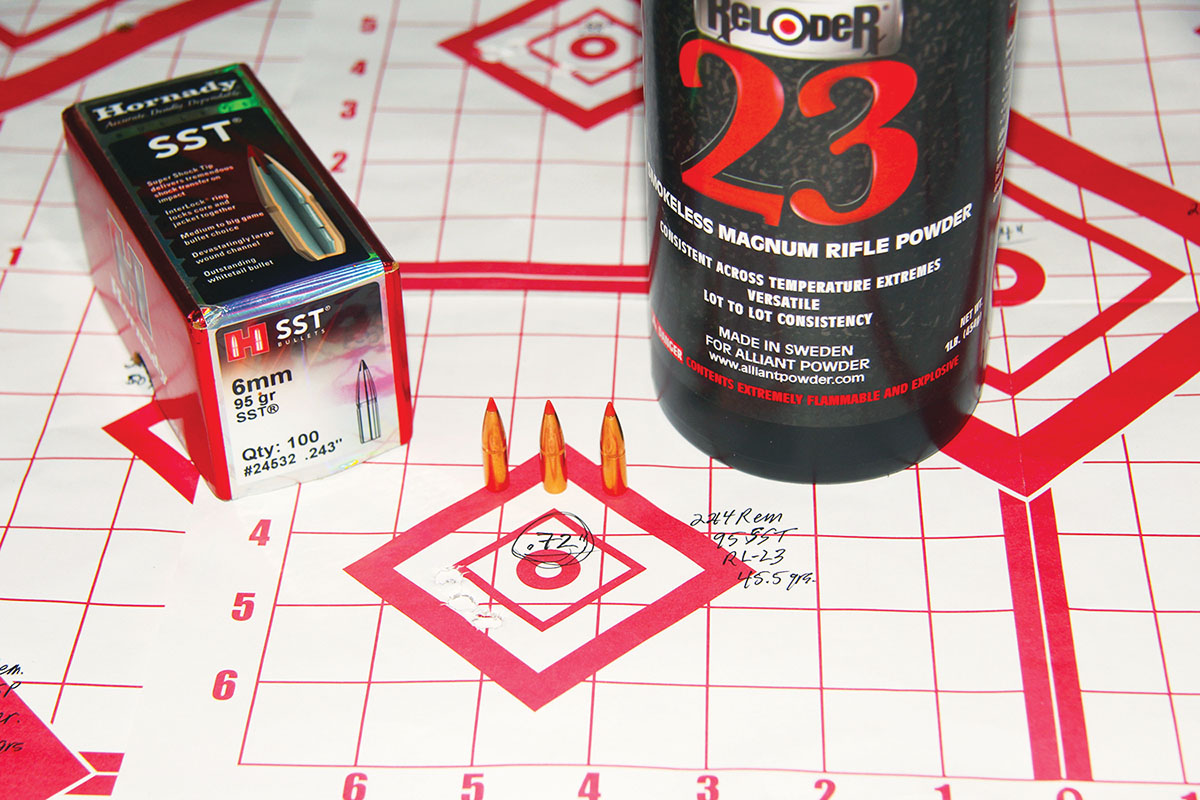
By 1963, coming to the realization they had greatly misread the situation, Remington rebranded the 244 Remington. Chambering it in newly-minted Model 700 rifles, they gave these rifles a faster 1:9 rifling twist and a 6mm Remington Magnum moniker (quickly amended to eliminate the Magnum). The 244 Remington was reborn, giving it true big-game chops and allowing it to outperform the 243 Winchester easily.
But it was too little, too late, as Winchester’s cartridge had already won the hearts of American shooters.
Despite this, the 6mm Remington retains an almost cultish following. That 10 percent increase in case capacity hinted at earlier, the 100-150 fps velocity gains, translate into 4 to 5 inches less drop at 500 yards and a couple inches less wind drift at similar ranges while shooting identical bullets. The extra inch of rifling twist allows slightly heavier bullets that get shooters into the “VLD/ELD” bullet class pushed by maximum SAAMI pressures of 65,000 psi versus the 243 Win’s 60,000 psi. The 6mm Rem also includes a .351-inch long neck versus a .241-inch long neck, which is better suited to firmly seating long-for-caliber bullets without intruding into powder space, giving handloaders more gains on the 243 Winchester.
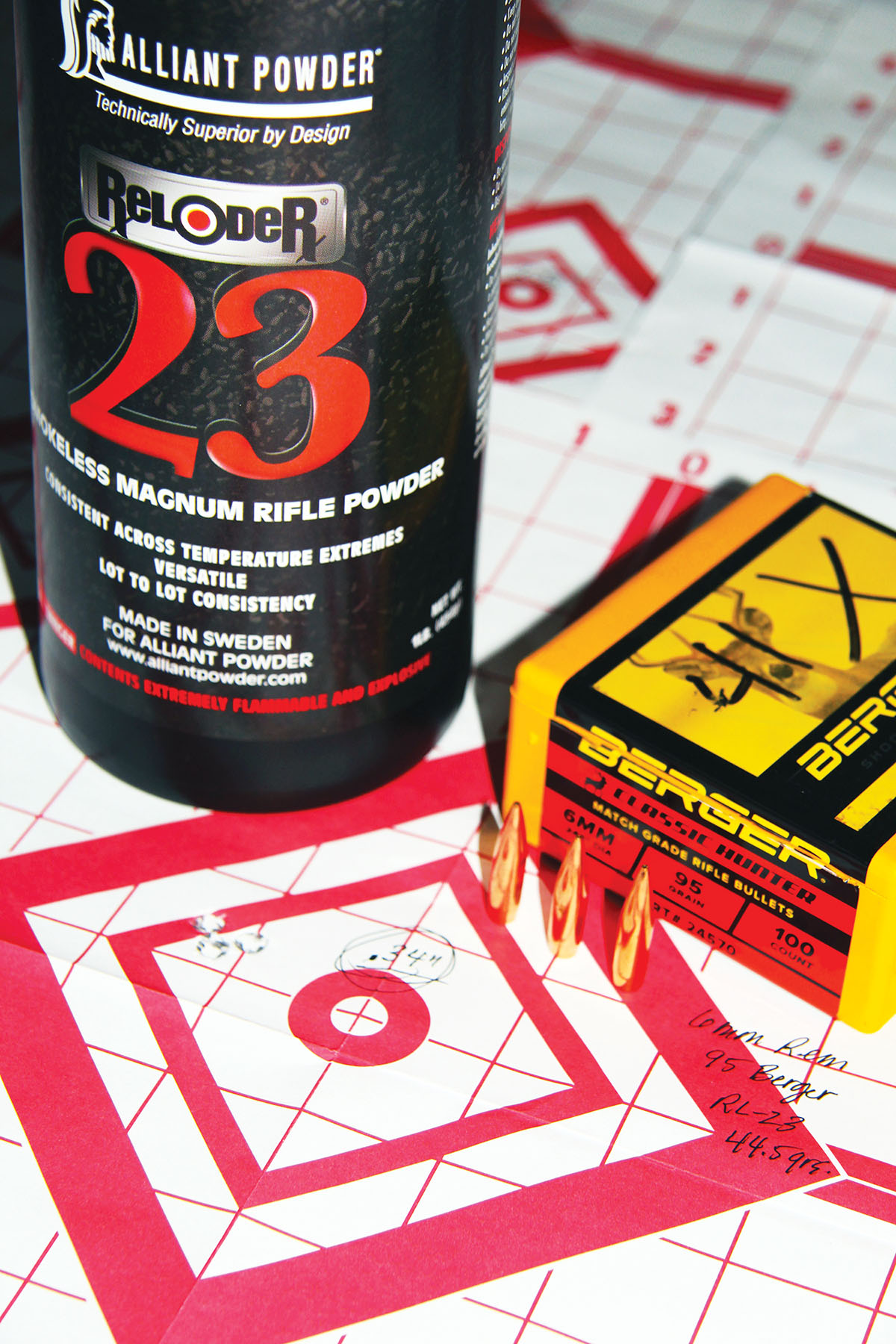
Remington developed special tooling to press checkering into the surfaces of the Model 700’s grip and forend in a fleur-de-lis pattern, reducing production costs. Each pressed diamond pointed inward rather than outward, as seen in cut checkering. A rugged new “RKW Bowling Pin Finish” constituted the stock finish. Remington has offered the Model 700 in more than 51 chamberings since its introduction, as well as small improvements to safety and function too numerous to outline here.
My 6mm Remington started life as a redundant 25-06 Remington chambered in a synthetic-stocked Remington 700 ADL. The 6mm Remington, like the 257 Roberts, could rightly be labeled a “medium-action” round crowded into a short action. I took the opportunity to introduce a long action, leaving plenty of room for seating long-for-caliber bullets properly. The 25-06 Rem barrel was replaced by a fluted 24-inch, 1:9-twist Wilson barrel, in addition to a Timney Trigger and a PROOF Research carbon fiber stock. This rifle long served as a long-range/windy-day varmint rifle, then bedded in a chunky McMillan stock and holding excessive magnification. Adding the more streamlined carbon stock inspired adding a sleeker Swarovski Optik Z8i 2-16x 50mm P scope better suited to big game hunting, mounted in Warne Mountain Tech rings on a Picatinny rail.
While assembling big-game loads for the 244 Remington/Model 722, flat-base bullets were chosen in diffidence to its slow twist. These included Remington’s classic 80-grain PSP, Hornady’s 95-grain SST and Speer’s 100-grain Grand Slam. The SST remained suspect, owning a longer bearing surface than the 100-grain Grand Slam. Much of the downfall of the 244 Remington hinged on the notion it was limited to 90-95-grain bullets – odd only in that most common bullets of its day were squatty, flat-base, cup-and-core numbers that should have stabilized sufficiently even at 100 grains. In this very rifle, hunt-ready groups have been assembled using Remington 100-grain flat base Core-Lokt bullets. That supply exhausted long ago, I felt the flat-base Speer Grand Slam would act as a viable substitute. Bullets were seated quite deeply in diffidence to the short action’s limited space, all of the bullets’ cannelures pushed inside the necks. Remington brass and Federal Ammunition Champion No. 210 primers were used in all 244 Rem loads.
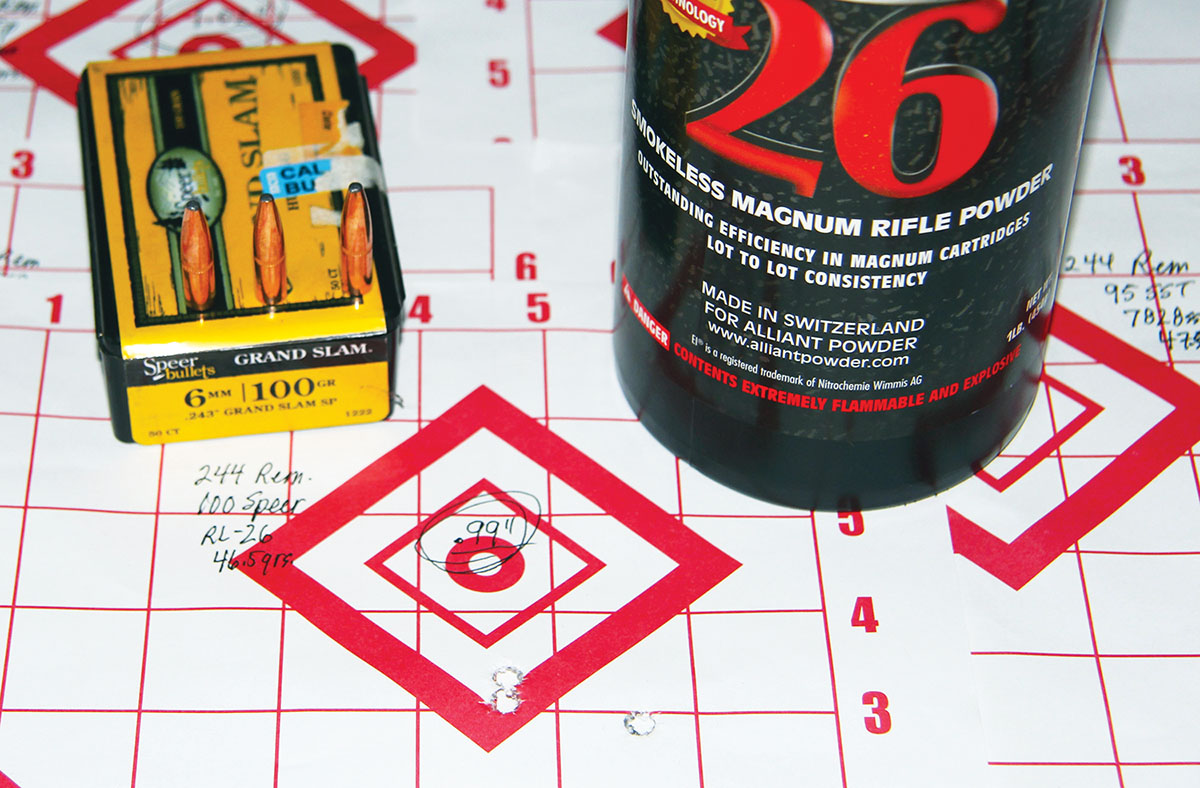
In the 722 Remington, the 80-grain PSP served as a benchmark, as there was no doubt it would stabilize and provide good accuracy. This certainly proved true, both 49 and 50 grains of Hodgdon Superformance shooting .53-inch groups at 3,298 and 3,421 fps, respectively. Hodgdon Varget and Ramshot Hunter produced sub-MOA groups with maximum loads, Varget producing 3,134 fps with a maximum load of 39 grains, Hunter giving up 3,412 fps with a maximum load of 48.5 grains.
My misgivings regarding SST stabilization proved unfounded, and several sub-MOA groups resulted. Shooters World SW4350 broke an inch using 43 grains of powder and hitting 2,950 fps. Alliant Reloder 23 bettered .75-inch (the best group with this bullet) with a compressed 45.5-grain charge, pushing the 95- grain bullet to 3,115 fps. IMR-7828ssc proved most consistent, producing two sub-MOA groups using 46 and 47 grains of powder, and clocking 3,141 and 3,201 fps, respectively.
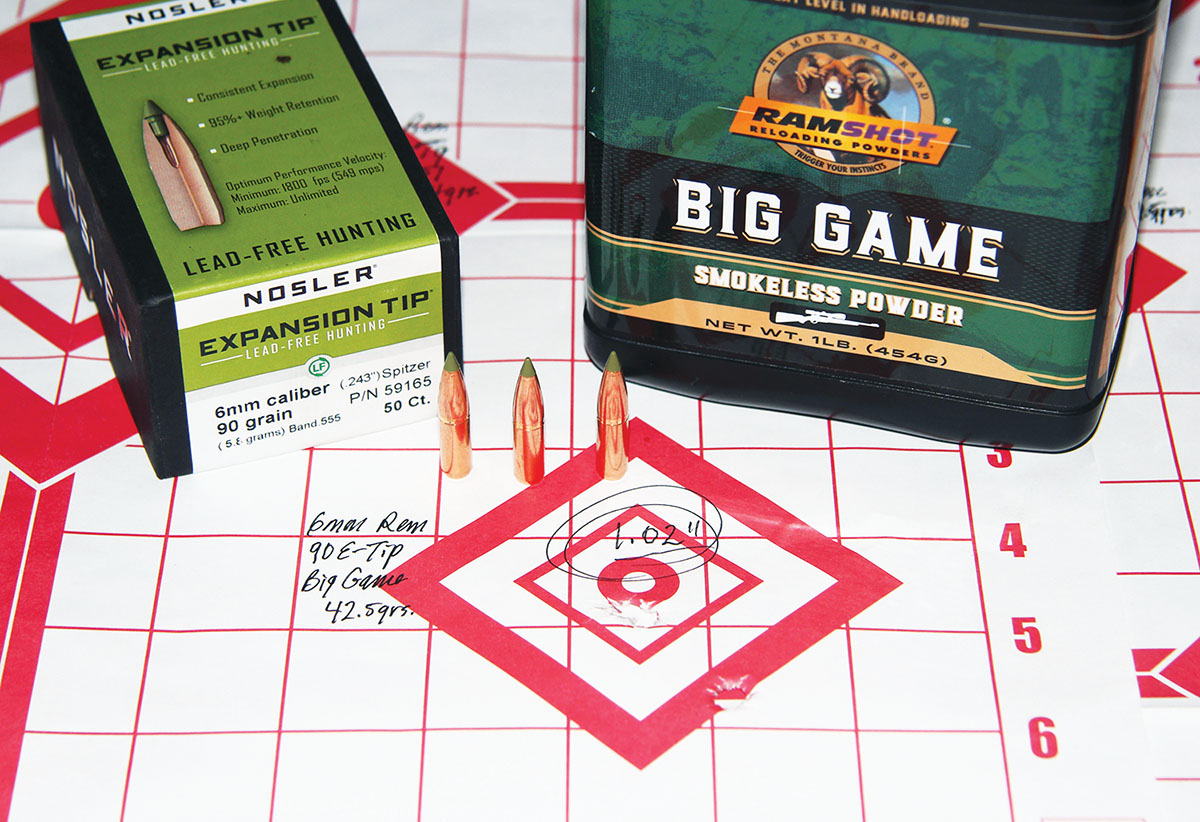
I believe the time has arrived to re-barrel my 6mm Remington; accuracy is definitely on the decline after too many hot shot strings over target-rich prairie dog towns. It struggled with the Nosler Expansion Tip, with the very best group measuring just 1.02 inches (42.5 grains of Ramshot Big Game at 3,137 fps). IMR-4451 Enduron managed 1.12 inches at 3,119 fps using 43 grains of powder, and Alliant Reloder 17 produced no groups worth mentioning. These groups are certainly big-game ready but not on par with the accuracy this rifle has provided in the past.
Berger’s 95-grain Classic Hunter confirmed I hadn’t lost my touch, producing a number of excellent groups. A .58-inch group resulted from 45 grains of Winchester StaBALL 6.5 and a muzzle velocity of 3,165 fps. Hodgdon 1000 managed a .65-inch group at 3,108 fps using 49.5 grains of powder. Alliant Reloder 23 saved the day, a 44.5-grain charge producing a .34-inch group at 2,970 fps and with a very low extreme velocity spread. That would make an excellent pronghorn or Coues whitetail load…
I’m going to have to come to grips with the fact my 6mm Rem just doesn’t like Hornady’s fine 103-grain ELD-X – odd only in that it typically shoots longer 105-grain VLDs just fine. Hodgdon Retumbo couldn’t save me, the best group 1.56 inches using a compressed/maximum load of 50 grains and hitting 3,073 fps. Reliable Alliant Reloder 22 didn’t do it either – resulting in a 1.47-inch group at 3,072 fps using a maximum load of 45 grains. New Ramshot Grand produced the best result, printing three shots into 1.31 inches using 49.5 grains of powder and pushing 3,048 fps.
During the course of this project, I established that the 244 Remington and its 1:12 twist will stabilize modern/poly-tipped, 95-grain and flat-base, 100-grain, big-game bullets. I also learned that a faster 1:9 twist rate doesn’t guarantee accuracy with many of today’s long-for-caliber hunting bullets. Lessons were learned, which is entirely the point of these exercises.


